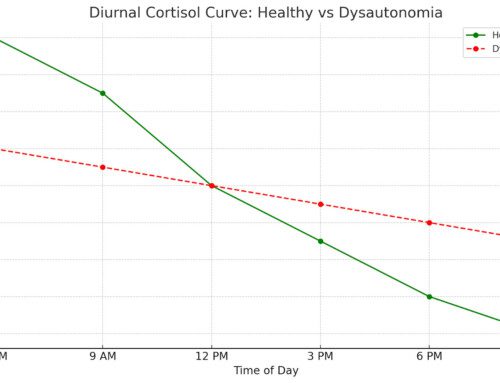If you or someone you love is living with Postural Orthostatic Tachycardia Syndrome (POTS), you know how frustrating it can be to face an often misunderstood condition. But here's the good news: research into POTS is accelerating—and recent studies are shedding light on its causes, treatments, and long-term outlook in ways that could reshape how we manage it.
Here's a roundup of some of the most exciting new findings in the world of POTS research.
POTS and the Brain: Cognitive Fog is Real
One of the most commonly reported symptoms of POTS is "brain fog"—difficulty focusing, processing, and remembering. A 2024 neuroimaging study used fMRI to explore this and found measurable differences in brain blood flow and connectivity in POTS patients during upright tilt. This suggests that brain fog isn't just a side effect—it may be a core part of the disorder's physiology.
Why it matters: Validating these symptoms helps drive better diagnostics and may lead to targeted cognitive therapies in the future.
Read more: Cerebral Blood Flow in Orthostatic Intolerance
Autoimmunity and POTS: More Links Emerging
A growing number of studies in the past year have found autoimmune markers in patients with POTS, especially those who developed it after viral infections (like COVID-19). One 2023 paper identified autoantibodies affecting adrenergic and muscarinic receptors, supporting the idea that POTS may be autoimmune for many patients.
Why it matters: This could open the door to immune-modulating treatments—and helps validate patients who've been told "it's all in your head."
Exercise vs. Medication: A Surprising Study
A new randomized controlled trial published in late 2023 compared tailored exercise programs to beta blockers, a common first-line treatment for POTS. While both groups saw improvements, the exercise group had better long-term outcomes in symptoms like fatigue, dizziness, and quality of life.
Why it matters: It reinforces the importance of non-pharmaceutical approaches, especially programs customized for autonomic dysfunction.
Long COVID and POTS: An Ongoing Investigation
Researchers are continuing to explore how Long COVID is linked to the sudden rise in POTS diagnoses. Recent cohort studies show that up to 30% of Long COVID patients meet diagnostic criteria for POTS, suggesting shared mechanisms between the two conditions—likely involving autonomic and immune system dysfunction.
Why it matters: As Long COVID gets more research funding, it could help unlock answers about POTS that have eluded scientists for decades.
Read more: Long-COVID and postural orthostatic tachycardia syndrome
Genetic Research: Clues from DNA
Although POTS is often sporadic, a 2024 genome-wide association study (GWAS) found preliminary evidence for genetic variants linked to autonomic signaling and connective tissue disorders like Ehlers-Danlos Syndrome (hEDS). It's early days, but researchers are hopeful this could lead to better risk profiling and early detection.
Why it matters: Understanding the genetic component may eventually allow for personalized treatment strategies.
Read more: The Genetic Landscape of Pediatric Postural Orthostatic Tachycardia Syndrome
What's Next?
Researchers are calling for larger studies, more funding, and increased awareness, especially now that the post-viral form of POTS is being recognized globally. Patients and advocates have played a huge role in pushing this momentum forward—proving once again that your voice matters.
Living with POTS is hard, but the science is catching up. With each new study, we get one step closer to answers, better treatments, and (hopefully) a cure. Stay informed, stay connected, and don't be afraid to ask your doctor about the latest research when managing your care.





